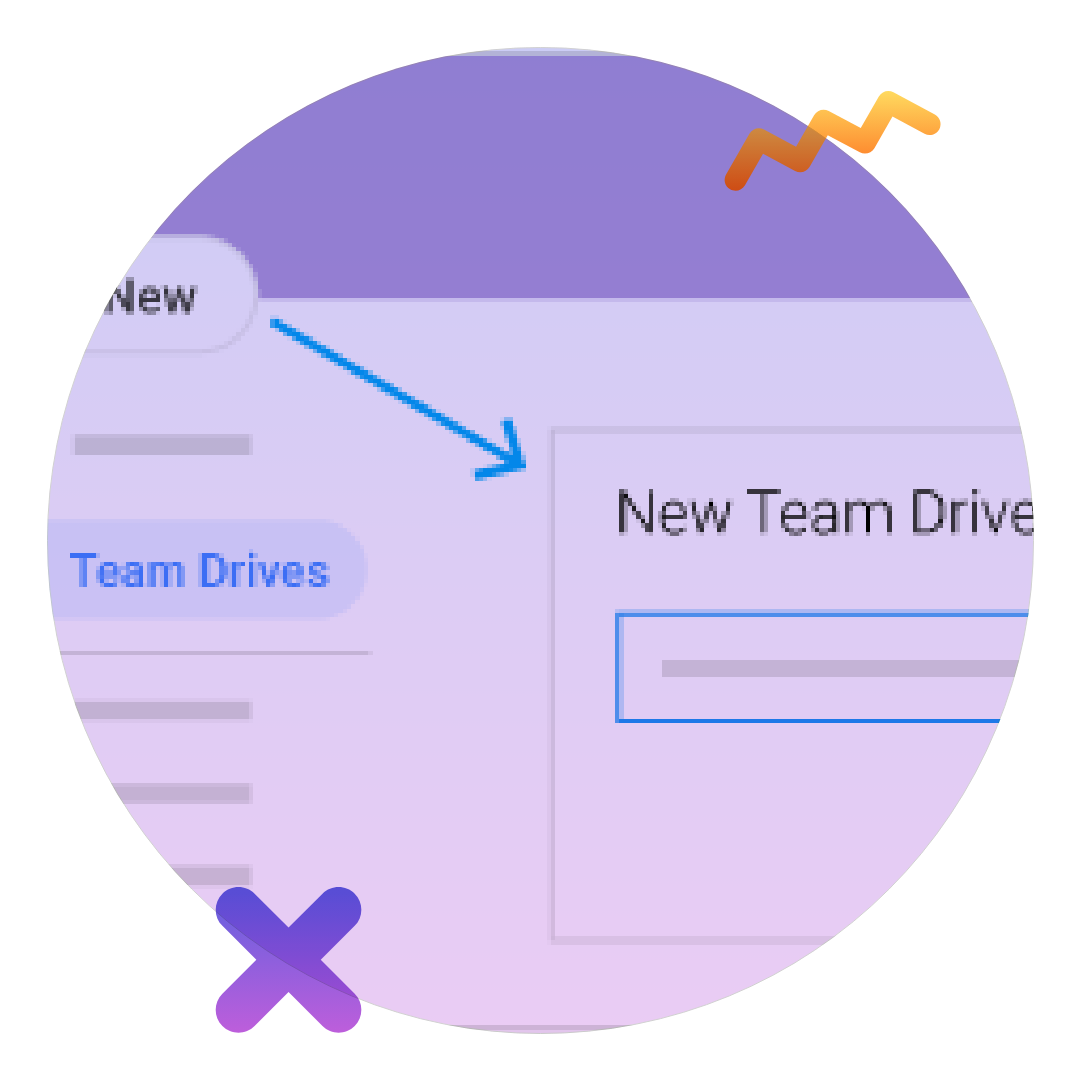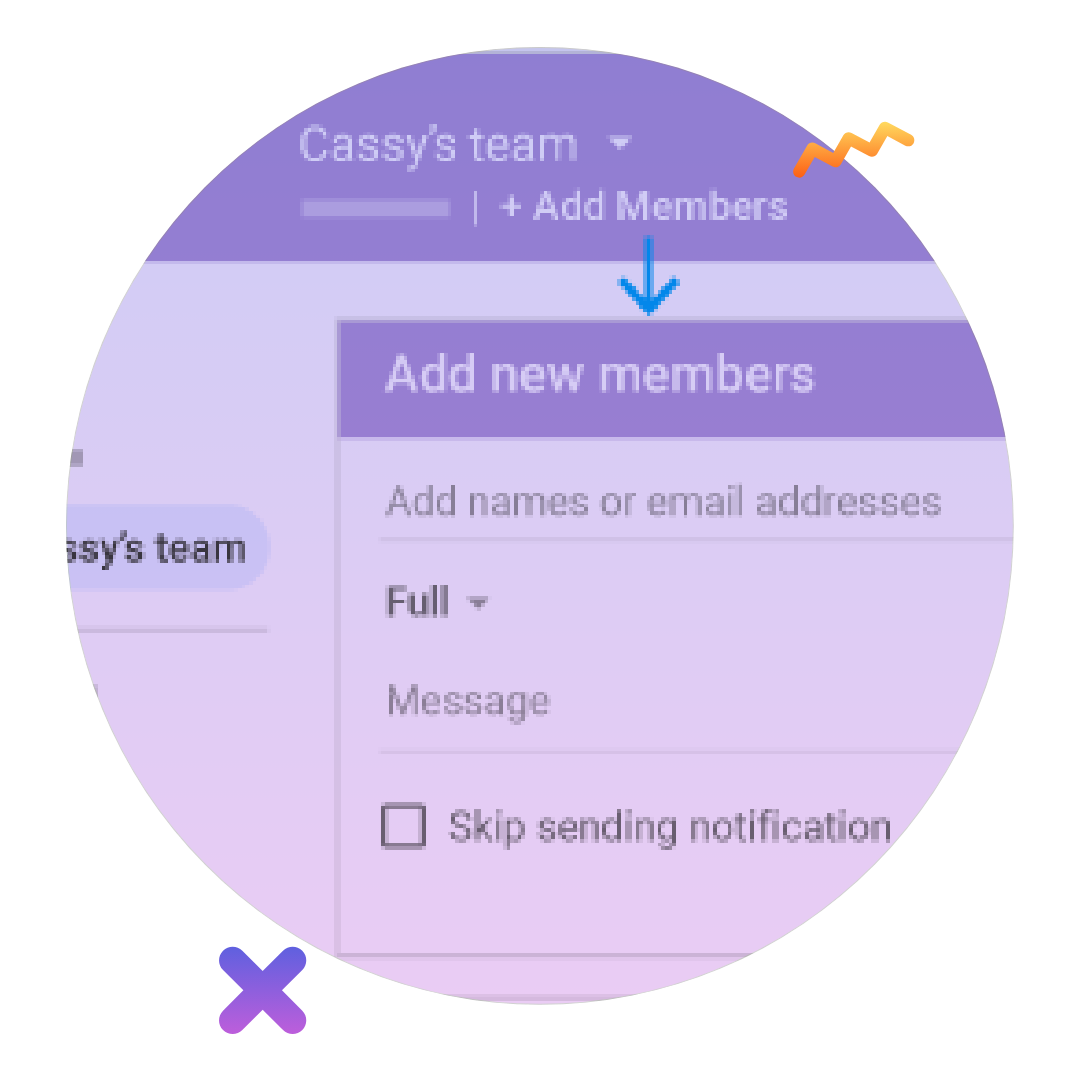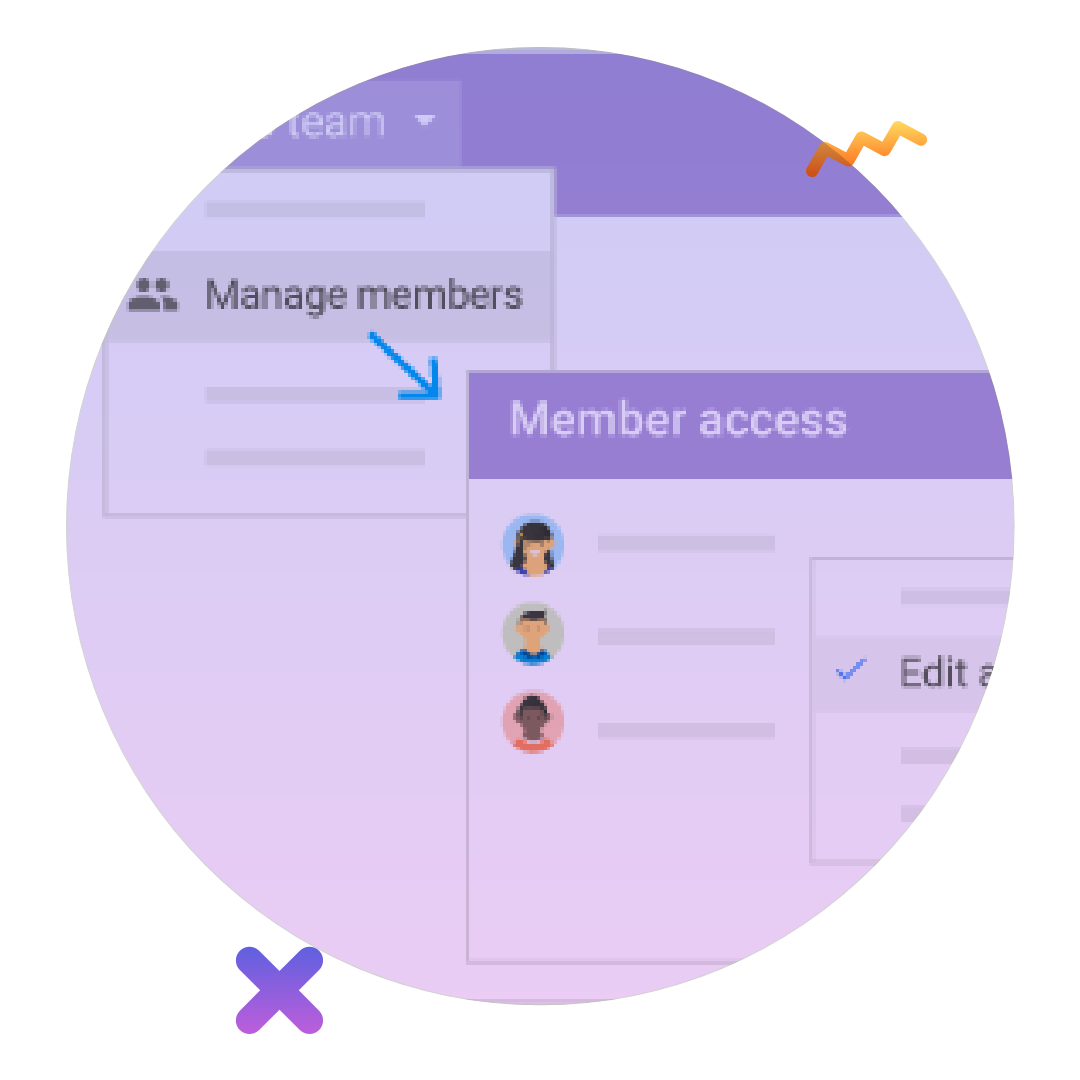
Ragavan
Date
Topics
Share
With the increasing use of smart contracts on the
blockchain for a variety of purposes, their security has
become a critical concern. Smart contracts enable
various functions, including decentralized voting,
gaming, and non-fungible token interactions. However,
as their popularity grows, so does the risk of malicious
attacks. Developers must prioritize smart contract
security during their development, deployment, and
use to mitigate this risk.
Smart contracts are a vital component of the blockchain
ecosystem, and it is essential to build secure and
resilient contracts that protect against attacks and
reduce the likelihood of incidents.

This article aims to explore the concept of smart contracts, their security features, functionality, and critical issues associated with them. It also discusses various approaches that can help ensure the security of smart contracts.
Smart contracts are computer programs that are saved on a blockchain network and can automatically execute when specific conditions are met. Their primary purpose is to automate the execution of an agreement or workflow, eliminating the need for intermediaries and ensuring immediate results for all participants involved.
The major advantage of smart contracts is that they operate without the need for intermediaries such as banks or lawyers to oversee transactions, making them a reliable and trusted system. Therefore, smart contracts are a cost-effective and efficient means of executing multiple transactions, including but not limited to real estate transactions, money transfers, and supply chain management.
Smart contracts are executed automatically; any error or flaw in the code can lead to unforeseen consequences. This may result in the loss of money or personal information. Also, since smart contracts are immutable once deployed, fixing any errors without implementing a new contract is impossible, which can be expensive and time-consuming.
Smart contracts are vulnerable to various vulnerabilities affecting their security and integrity. Here are some of the most common vulnerabilities in smart contracts.
A reentrancy attack occurs when an attacker repeatedly calls a vulnerable smart contract function, allowing the attacker to withdraw funds from the contract.
Integer overflow and underflow vulnerability occur when smart contract code lacks proper checking for integer input, which can lead to overflow or arithmetic overflow, resulting in unexpected and non-integer behavior desired.
Logic error vulnerability occurs when the smart contract code has a bug in the logic flow, allowing an attacker to exploit the behavior of the contract accidentally.
Malicious code insertion occurs when an attacker injects malicious code into a smart contract, which can lead to unexpected and undesirable behavior in the contract.
Gasless sending vulnerability occurs when the smart contract fails to verify whether the sender has enough gas to complete the transaction, resulting in the sender’s inability to complete the transaction.

Developers should use secure coding methods when developing smart contracts. These include avoiding outdated or untested functions and libraries, validating input, and implementing input validation checks to prevent unexpected behavior.
Thorough testing is essential to identify vulnerabilities and prevent financial loss or reputational damage. Developers should perform unit testing, integration testing, and system testing to evaluate the functionality and performance of their smart contracts.
The more complex the smart contract, the more vulnerable it is. Developers should strive to keep their smart contracts simple and straightforward to reduce the risk of being hacked.
External contracts should be restricted to minimize the risk of introducing vulnerabilities from third-party code.

Developers should regularly update smart contract codes to address potential vulnerabilities arising from new exploits or changes to the blockchain network.
Smart contract security is crucial in ensuring the safety and reliability of blockchain transactions. As the use of blockchain technology continues to expand, the importance of securing smart contracts has become even more significant. A recent report by Ciphertrace shows that the number of smart contract vulnerabilities has increased, with over $500 million in losses due to security breaches in 2021 alone. This highlights the critical need for developers to prioritize smart contract security and implement best practices such as secure coding, regular testing, and access control.
By investing in smart contract security, businesses and individuals can reduce the risk of financial loss and reputational damage caused by security breaches. The blockchain industry has tremendous potential to transform industries and provide greater transparency, efficiency, and security in transactions. By prioritizing smart contract security, we can ensure that this technology reaches its full potential and enables a more secure and trustworthy digital economy.
Cloud Destinations is an industry leader with a wide range of expert teams that helps businesses to implement cutting-edge technologies in their core systems and helps them to achieve their business goals. Check our website for further details or write to us at info@clouddestinations.com for any query.

Ragavan
Date
Topics
Share
This digital transformation is revolutionizing the way companies operate in almost every industry. Digital transformation is more than just adopting new technologies; it’s about redefining business strategies to keep up with the rapidly changing digital landscape.
In this article, we’ll explore how digital transformation is redefining business strategies for the 21st century. Whether you’re a small business or a large enterprise, understanding digital transformation is critical to remain competitive in today’s digital age.
Before the era of digital transformation, businesses primarily used technology to automate mundane tasks, manage data, and support specific business functions. However, this often led to inefficiencies and a lack of agility due to disconnected systems and siloed operations.

After the advent of digital transformation, technology is fully integrated into all aspects of a
business, resulting in a more streamlined and connected operation. Cutting-edge technologies
such as artificial intelligence, machine learning, and the Internet of Things are used to improve
decision-making, create unparalleled customer experiences, and enable innovative new
business models.
This digital revolution has empowered businesses to be more responsive, adaptable, and
competitive in a rapidly changing digital landscape. With the power of digital transformation,
businesses can stay ahead of the curve and lead the way in their respective industries.
Digital transformation involves the use of digital technologies to overhaul traditional and nondigital business processes and services or to create new ones that align with changing market and customer expectations. This results in a complete transformation of how businesses are managed and operated, as well as how they deliver value to their customers.
The digital transformation landscape is constantly evolving. Here are some of the most significant trends shaping the future of digital transformation:
Cloud computing is the backbone of digital transformation, enabling businesses to store and process data on remote servers instead of on-premises hardware. This allows companies to access data and applications from anywhere, at any time, using any device. Cloud computing also makes it easier to scale up or down as needed, reducing the cost of infrastructure and maintenance.
IoT devices are becoming ubiquitous, and they are transforming the way we interact with technology. From smart home devices to wearable technology, IoT is creating a network of connected devices that can communicate and exchange data. This allows businesses to collect valuable data that can be used to improve customer experiences, optimize processes, and create new products and services.
AI is changing the way we interact with technology, and it’s becoming an essential tool for businesses. AI-powered chatbots, for example, can provide 24/7 customer support, reducing the workload of customer service teams. AI can also be used to analyze large datasets, identify patterns, and make predictions, enabling businesses to make more informed decisions.
As businesses become more digital, they also become more vulnerable to cyber threats. Cybersecurity is critical for any business undergoing digital transformation. Companies must implement robust security measures to protect their data and systems from cyber-attacks.

The benefits of digital transformation are numerous. Here are just a few examples:
Digital transformation streamlines business processes, automate repetitive tasks, reducing the time and resources required to complete tasks. This can lead to cost savings and increased productivity.
Digital transformation enables businesses to personalize customer experiences, making them more engaging and memorable. This can increase customer loyalty and drive repeat business.
Digital transformation creates new opportunities for innovation, allowing businesses to develop new products and services, enter new markets, and create new revenue streams.
Digital transformation helps businesses to collect and analyze real-time data and analytics, enabling them to make better decisions faster.

Digital transformation can enable businesses to be more agile and responsive to changing market conditions.
Despite its benefits, digital transformation also presents several challenges for businesses, including:
Employees may resist changes to business processes and culture. It is important to involve employees in the digital transformation process and communicate the benefits of the changes.
Digital transformation requires specialized skills, and there may be a shortage of talent in areas such as AI, cybersecurity, and data analytics.
Legacy systems can be a hindrance to digital transformation, as they may not be compatible with new technologies, and replacing them can be costly and time-consuming.
As mentioned earlier, businesses undergoing digital transformation may be more vulnerable to cyber threats, and companies must implement robust security measures to protect their data and systems.
Implementing new technologies can be expensive. It is important to carefully consider the costs and benefits of each technology.
Here are a few best practices for implementing a successful digital transformation:
A clear digital transformation strategy is essential to guide the process. This strategy should align with the business goals and involve all stakeholders.
Digital transformation requires a cultural change, and businesses should foster a culture of innovation that encourages experimentation, risk-taking, and continuous learning.
Digital transformation should be customer-centric, focusing on enhancing the customer experience. Understanding customer needs and preferences is key to implementing successful digital initiatives.
Data analytics can provide valuable insights into customer behavior and business operations. Businesses should use data analytics to identify areas for improvement and inform decision-making.

A strong digital culture is essential for successful digital transformation. This includes providing digital training to employees, encouraging experimentation, and rewarding innovation.
Partnering with experts can help businesses navigate the complex landscape of digital technologies. Working with technology vendors, consultants, and other experts can provide valuable expertise and support.
Finally, businesses should embrace change and be prepared to pivot their strategies and processes as needed to keep up with the evolving digital landscape.
Digital transformation is no longer a choice for businesses, it’s a necessity. The 21st century has brought about unprecedented technological advancements and businesses that fail to adapt risk falling behind the competition. The challenges of digital transformation are significant, and there is no one-size-fits-all solution. However, businesses that prioritize digital transformation can reap significant rewards, including increased productivity, enhanced customer experience, and improved business agility.
In conclusion, digital transformation is not just about technology, it’s about people, culture, and strategy. Businesses that approach digital transformation holistically, with a clear vision and a plan for execution, can thrive in the 21st century and beyond.
Cloud Destinations is an industry leader with a wide range of expert teams that helps businesses to implement cutting-edge technologies in their core systems and helps them to achieve their business goals. Check our website for further details or write to us at info@clouddestinations.com for any query.

Ragavan
Date
Topics
Share
Welcome to the dawn of a new era in retail, where the secret to success lies not only in strategic product placement or eye-catching displays but in the realm of data analytics. In this digital age, retailers have discovered a goldmine of information that is transforming the way they do business. By harnessing the power of data analytics, they are uncovering valuable insights, predicting customer preferences, and redefining the shopping experience.
In this blog article, we explore how data is revolutionizing the industry, driving growth, enhancing customer satisfaction, and propelling businesses to new heights. We will explore the innovative ways in which retailers are leveraging data analytics to understand consumer behavior, optimize operations, and stay one step ahead of the competition.

Retailers are using data analytics to gain a deeper understanding of their customers. By analyzing customer data, including purchase history, browsing behavior, and demographics, retailers can create personalized experiences tailored to individual customers. Customer segmentation allows retailers to group customers based on their preferences and behaviors, enabling targeted marketing campaigns and personalized product recommendations.


Predictive analytics is empowering retailers to anticipate customer behavior and preferences. By leveraging historical data, retailers can predict future buying patterns, identify customer churn, and proactively address customer needs. This enables retailers to offer personalized recommendations, send timely promotions, and provide a seamless customer experience.


Effective demand forecasting is crucial for retailers to optimize inventory and reduce costs. By analyzing historical sales data, market trends, and external factors such as weather patterns, retailers can accurately forecast demand and align their inventory levels accordingly. This helps in minimizing stockouts, avoiding overstock situations, and improving supply chain efficiency.


Retailers are leveraging data analytics to streamline their supply chain operations. Real-time data from various sources, including suppliers, logistics providers, and point-of-sale systems, can be analyzed to identify bottlenecks, optimize routes, and enhance overall supply chain efficiency. This results in faster delivery times, reduced costs, and improved customer satisfaction.
Data analytics is transforming how retailers manage their stores. By analyzing data from various sources such as foot traffic, sales transactions, and staffing schedules, retailers can optimize store layouts, improve staffing efficiency, and enhance the overall in-store experience. These insights help retailers make informed decisions to maximize sales and create a pleasant shopping environment for customers.


Data analytics enables retailers to implement dynamic pricing strategies that adjust prices in real-time based on various factors such as demand, competition, and customer behavior. By analyzing market trends, competitor pricing, and customer preferences, retailers can optimize their pricing strategies to maximize revenue and profitability. Dynamic pricing also allows retailers to offer personalized discounts and promotions to specific customer segments, driving customer loyalty and satisfaction.


Retailers invest significant resources in promotional campaigns to attract customers and drive sales. Data analytics helps retailers optimize their promotional strategies by analyzing the effectiveness of past campaigns, customer responses, and market trends. By identifying the most effective channels, messaging, and timing for promotions, retailers can allocate their resources efficiently and achieve better results.
In a highly competitive retail landscape, staying informed about competitor pricing is crucial. Data analytics enables retailers to monitor and analyze competitor prices in real-time, allowing them to adjust their pricing strategies accordingly. By leveraging competitive pricing intelligence, retailers can ensure that their prices remain competitive while maintaining profitability.


The layout of a retail store plays a significant role in influencing customer behavior and driving sales. Data analytics helps retailers analyze customer movement patterns, heat maps, and dwell times to optimize store layouts. By strategically placing products, signage, and displays, retailers can enhance customer engagement, increase product visibility, and improve the overall shopping experience.
Effective visual merchandising is critical for capturing customer attention and promoting products. Data analytics allows retailers to analyze the impact of different visual merchandising techniques, such as product placement, signage, and display designs. By understanding which visual elements resonate with customers, retailers can optimize their visual merchandising strategies to increase customer engagement and sales.


Understanding customer paths within a store can provide valuable insights into customer behavior and preferences. Data analytics enables retailers to analyze customer movement patterns and identify popular areas, high-traffic zones, and potential bottlenecks within the store. This information helps retailers optimize store layouts, improve product placement, and create a seamless shopping experience that encourages customers to explore more and make purchases.
With the increasing reliance on data analytics, it is crucial for retailers to prioritize the security and privacy of customer data. Retailers must implement robust data protection measures, including encryption, secure data storage, and strict access controls. By maintaining the trust of their customers and ensuring the confidentiality of their data, retailers can continue to leverage analytics for business growth.


As data analytics becomes more prevalent in the retail industry, retailers must also comply with data protection regulations, such as the General Data Protection Regulation (GDPR) and the California Consumer Privacy Act (CCPA). These regulations impose strict requirements on data collection, usage, and consent. Retailers must ensure that their data analytics practices align with these regulations to avoid penalties and maintain a positive reputation.

AI and Machine Learning Integration
Artificial intelligence (AI) and machine learning (ML) technologies are poised to revolutionize retail analytics even further. These technologies can process vast amounts of data, identify patterns, and make accurate predictions in real-time. AI-powered chatbots and virtual assistants can enhance customer service, while ML algorithms can provide more accurate demand forecasting and personalized recommendations.
Internet of Things (IoT) and Sensor Data
The proliferation of IoT devices and sensors in the retail industry generates massive amounts of data. Retailers can leverage this data to gain insights into customer behavior, optimize inventory management, and improve store operations. By integrating IoT and sensor data with retail analytics, retailers can create smarter, more connected retail environments.
Predictive Analytics for Supply Chain Optimization
Predictive analytics will continue to play a vital role in optimizing supply chain operations. Retailers can leverage real-time data from various sources, including suppliers, logistics providers, and IoT sensors, to predict demand, optimize inventory levels, and streamline the entire supply chain. This results in improved efficiency, reduced costs, and enhanced customer satisfaction.
Wrapping Up
Retail analytics is transforming the retail industry by leveraging the power of data to enhance customer experiences, optimize operations, and drive profitability. From personalized marketing campaigns to efficient supply chain management and data-driven pricing strategies, retailers can make informed decisions that positively impact their bottom line. As technology continues to advance and new data sources emerge, the potential for retail analytics to revolutionize the industry further is limitless. Retailers that embrace data analytics and prioritize data security and privacy will be well-positioned to thrive in the ever-evolving retail landscape. By harnessing the insights derived from data analytics, retailers can create exceptional shopping experiences, foster customer loyalty, and stay ahead of the competition.
Cloud Destinations is an industry leader with a wide range of expert teams that helps businesses to implement cutting-edge technologies in their core systems and helps them to achieve their business goals. We help you uncover the hidden story behind the numbers and uncover the immense potential data holds for the future of retail. Are you ready to unlock the secrets behind successful retail strategies? Let's begin the journey together.
Check our website at https://clouddestinations.com for further details, or write to us at info@clouddestinations.com for any query.

Ragavan
Date
Topics
Share

It’s no surprise that people enjoy using Google Drive. Google Drive, whether for business or personal use, allows users to create, edit, save, and share documents in real-time with others, keep track of changes to files and folders, build document templates, share big files, and much more. Google offers Team Drive to G Suite Business and Enterprise users, giving them even more control over the company structure and workflow.
If your team members are already utilizing Google My Drive, then Team Drive is pretty intuitive and comes with a few extra features that make sense when running a business. Employees will have easier visibility and access to the files they need, G-Suite admins can control levels of access and sharing, and there are also extra security features for sensitive data.
Team Drive streamlines workflow for every department, project, and collaboration within your business. It makes onboarding and offboarding easier and facilitates best practices for organizations. Documents and files can be stored in one central Team Drive rather than multiple My Drives, ensuring better security control. You don’t have to worry about employees forgetting to share viewing or editing permissions to documents. You can limit what gets shared externally. Team members can access company-wide documents and templates at any time. Simply put, using Google Drive as a small business is a no-brainer.
Now that you’re convinced Team Drives can help unify teams within your business, here are some tips to help you use Team Drive effectively.

Having a backup of all your data is generally a good idea for every business in any situation. Migrating your files can be tricky, and there is always the possibility of accidental data loss or corruption. Protect your company’s data by backing it up before and after migration.
Teamwork makes the dream work, and there are several ways to utilize Team Drives so that team members, departments, and collaborators can better work together.

1. Project and collaborations
Include team members, contractors, and clients who are all working on the same projects so that they can access the same files and folders
2. Departments/Teams
Give departments, regional divisions, and other types of teams their own Team Drive so they can access files and folders that are relevant to them
3. Company-wide files and templates
Allow easy access to company policies and forms to employees whenever they need
4. Sensitive files
Add extra security measures to sensitive files, as well as limit access to select members
5. Name files accordingly
It’s possible to name different files and folders the same name. To avoid naming conflicts, create a labeling system that will make it easier for teams to find their resources without confusion. You can use different prefixes to specify active projects versus archived ones, internal files versus external files, or to label sensitive information.
6. Have an action plan when users need to be removed
As we mentioned earlier, onboarding and offboarding employees in Team Drive can be a breeze, but with all that access comes a lot of responsibility. So, when it comes time to offboard an employee, make sure you have processes in place that remind you to remove the user from Team Drive and do so correctly.
7. Set boundaries
While Team Drive allows you to group people who need access to the same resources, it’s possible that not all team members need the same type of access. Managers have full permissions and can control access levels; they can limit editing, viewing, downloading, and sharing permissions. Content Managers and Contributors can update content, while Commenters or Viewers can access files without updating them.

Step 1: Accessing G Suite Admin Console
Step 2: Navigating to Team Drive Settings
Once you’re logged in, you’ll be on the Admin Console dashboard.


Step 3: : Creating a Team Drive
Step 4: Setting up the Team Drive


Step 5: Adding Members to the Team Drive


To manage the settings of an existing Team Drive, go back to the Team Drives page. Locate the Team Drive you want to manage and click on its name or the three-dot menu button to access additional options. From the available options, you can:
Wrapping Up
Transitioning into Team Drives is a team effort, and using the mentioned tips will help you and your data in a way that improves productivity.
Cloud Destinations is an industry leader with a wide range of expert teams that helps businesses to implement cutting-edge technologies in their core systems and helps them to achieve their business goals. We help you uncover the hidden story behind the numbers and uncover the immense potential data holds for the future of your business. Are you ready to unlock the secrets behind successful business strategies? Let’s begin the journey together.
Check our website at https://clouddestinations.com for further details, or write to us at info@clouddestinations.com for any query.

Ragavan
Date
Topics
Share
With the rise
of remote working and online transactions, cyber threats
have become more sophisticated, and the consequences of a
data breach can be catastrophic.
This article will discuss the importance of cybersecurity, the common types of cyber attacks, and
how to protect your personal and business data from cyber threats.
Cybersecurity protects devices, networks, and data from unauthorized access or damage. It
involves a range of strategies, technologies, and best practices designed to secure digital assets
and prevent cybercrime. Cybersecurity matters because it protects our personal information,
financial data, and other sensitive information from cyber threats, such as identity theft, data
breaches, and ransomware attacks.
The consequences of a data breach can be severe for individuals and businesses. In addition to
the financial losses and legal liabilities associated with a data breach, the loss of customer trust
can have long-term consequences. A company that experiences a data breach may find it difficult
to recover from the reputational damage and loss of goodwill that can result.
Individuals and businesses should be aware of several common types of cyber attacks. Understanding these threats can help you take steps to protect your data and prevent a cyber attack.
Phishing is a type of cyber attack involving fraudulent emails, text messages, or websites to trick individuals into sharing sensitive information. Phishing emails often appear to be from legitimate sources, such as banks, social media platforms, or online retailers. They may include a link to a fake website that looks like the real one, where the user is asked to enter their login credentials or other personal information.
Malware is software designed to harm, exploit, or gain unauthorized access to a device or network. Malware can be delivered through email attachments, infected websites, or by exploiting vulnerabilities in outdated software. Common types of malware include viruses, Trojan horses, and ransomware.
A Denial-of-Service (DoS) attack is a type of cyber attack that aims to overwhelm a website or network with traffic, rendering it inaccessible to legitimate users. DoS attacks can be carried out using a botnet, which is a network of infected devices that can be controlled remotely by a hacker.
A Man-in-the-Middle (MitM) attack is a type of cyber attack that involves intercepting communications between two parties in order to steal information or modify data. MitM attacks can be carried out by exploiting Wi-Fi network vulnerabilities or using malware to intercept and modify data in transit
Password attacks are a type of cyber attack that involves attempting to guess or crack a user’s password. This can be done through brute-force attacks, which include trying every possible combination of characters until the correct password is found. Password attacks can also be carried out using social engineering tactics, such as phishing emails that ask users to enter their passwords on a fake website.
Protecting your personal and business data from cyber threats requires a combination of strategies, technologies, and best practices. Here are some steps you can take to improve your cybersecurity posture: Use Strong Passwords and Two-Factor Authentication One of the most effective ways to protect your data is to use strong passwords and enable two-factor authentication (2FA) wherever possible. A strong password should be at least 12 characters long and include a mix of upper and lowercase letters, numbers, and symbols. 2FA adds an extra layer of security by requiring a second form of identification, such as a fingerprint scan or a code sent to your mobile device. This makes it much more difficult for cybercriminals to gain access to your accounts, even if they have your password.

Keeping your software and systems up-to-date is essential to protect against cyber threats. Software updates often contain patches for vulnerabilities that cybercriminals can exploit. This applies to your computers, mobile device operating systems, and any software you use, such as web browsers and productivity apps.
Antivirus software and firewalls can help protect your devices and networks from cyber threats. Antivirus software scans your device for malware and can detect and remove threats before they cause damage. Firewalls can block unauthorized access to your network and prevent cybercriminals from stealing your data.
Phishing emails often contain links or attachments that, when clicked or downloaded, can infect your device with malware or redirect you to a fake website where you may unwittingly enter sensitive information. Always be careful when clicking links or downloading attachments, and verify the source’s legitimacy before taking any action.
One of the best ways to protect against cyber threats is to educate yourself and your employees about cybersecurity best practices. This includes things like how to create strong passwords, how to recognize phishing emails, and how to use antivirus software and firewalls. Regular training and updates can help ensure that everyone in your organization knows the latest cyber threats and how to protect themselves and your business.
Regularly backing up your data is essential to protect against data loss caused by cyber-attacks. If your device or network is infected with malware or becomes otherwise compromised, having a backup of your data can help you recover quickly and avoid the loss of important information.

Cybersecurity has become a critical issue as we continue to rely more and more on technology to manage our personal and business data. Cyber threats are becoming more sophisticated, and the consequences of a data breach can be catastrophic. By taking steps to protect your personal and business data, you can significantly reduce your risk of a cyber attack.
Remember, cybersecurity is everyone’s responsibility, and taking action to protect your data is the best way to ensure a secure and safe digital environment. Cloud Destinations is an industry leader with a wide range of expert teams that helps businesses to implement cutting-edge technologies in their core systems and helps them to achieve their business goals.

Check our website at https://clouddestinations.com for further details or write to us at info@clouddestinations.com for any query.

Ragavan
Date
Topics
Share
Companies that prioritize diversity and inclusion are not only doing the right thing, they’re also reaping significant benefits. From attracting and retaining top talent to driving innovation and improving financial performance, workplace diversity and inclusion are critical components of building an engaged and productive workforce. Let’s deep dive into the article and explore the many benefits of workplace diversity and inclusion in employee engagement, and tips for companies to create a more diverse and inclusive workplace culture.

Before taking a closer look at the benefits, it’s important to understand what we mean by workplace
diversity and inclusion. Diversity refers to the differences among employees, including differences in race,
ethnicity, gender, age, religion, and sexual orientation. Inclusion, on the other hand, is the act of
creating an environment where all employees feel valued, respected, and supported.
Together, diversity
and inclusion create a workplace that is rich in perspectives, experiences, and ideas. Employees are
encouraged to bring their full selves to work, which can lead to increased engagement and a stronger sense
of belonging.
When employees come from different backgrounds and have different perspectives, they are more likely to come up with creative solutions to problems. In a diverse and inclusive workplace, employees are encouraged to share their ideas and perspectives, which can lead to new and innovative approaches to business challenges. This, in turn, can lead to increased employee engagement as employees feel that their contributions are valued and that they are making a meaningful impact on the company.
Diversity and inclusion can also lead to improved decision-making. When a team is made up of people with different backgrounds and experiences, they are more likely to consider a variety of perspectives when making decisions. This can lead to better decision-making outcomes and can also help employees feel more engaged in the decision-making process.
When employees feel that they are part of an inclusive workplace, they are more likely to feel satisfied with their jobs. They are more likely to feel that they belong and that their contributions are valued, which can lead to increased engagement and a sense of pride in their work.
When employees feel that they are part of an inclusive workplace, they are more likely to stay with the company long-term. This can help reduce turnover and can save the company money on recruitment and training costs. It can also lead to a more stable and consistent workforce, which can lead to increased productivity and engagement.
A diverse and inclusive workplace can also lead to increased customer satisfaction. When a company’s employees come from different backgrounds and have different perspectives, they are more likely to understand and connect with a diverse customer base. This can lead to better customer service and can help build customer loyalty.
Companies that prioritize diversity and inclusion are often more competitive in the marketplace. A diverse workforce can bring unique skills, experiences, and perspectives that can give a company a competitive advantage. This can lead to increased revenue and growth, which can in turn lead to increased employee engagement and job security.
Companies that prioritize diversity and inclusion are often viewed more positively by customers, employees, and the general public. This can lead to an improved brand reputation and can help attract top talent to the company. Employees who are proud of their company’s commitment to diversity and inclusion are also more likely to be engaged and motivated to perform well.

When employees come from diverse backgrounds and have different perspectives, they are more likely to approach problems in new and innovative ways. This can lead to enhanced problem- solving skills and can help a company adapt to changing market conditions. Employees who feel that their ideas are valued and appreciated are also more likely to be engaged and motivated to contribute to the company’s success.
Working in a diverse and inclusive workplace can help employees develop a better understanding of different cultures, customs, and traditions. This can lead to improved cultural competency, which can be an important asset in today’s global marketplace. Employees who are comfortable working with people from diverse backgrounds are also more likely to be engaged and motivated to perform well.

A diverse and inclusive workplace can also help reduce conflict and improve collaboration. When employees feel that their ideas and perspectives are valued, they are more likely to work together in a positive and collaborative manner. This can lead to improved teamwork, increased productivity, and a more engaged workforce.
Achieving workplace diversity and inclusion requires a concerted effort from leadership and employees at all levels. Here are some strategies that companies can use to create a more diverse and inclusive workplace:
One of the key components of a diverse and inclusive workplace is open communication. Companies should encourage employees to share their ideas and perspectives and should create a culture where all voices are heard.
Companies should provide diversity training for all employees. This can help increase awareness and understanding of different cultures, backgrounds, and perspectives, and can help create a more inclusive workplace.
Companies should make a conscious effort to hire employees from diverse backgrounds. This can help create a more diverse workforce and can help employees feel that their contributions are valued.
Creating an inclusive culture requires ongoing effort from leadership and employees at all levels. Companies should establish policies and procedures that promote inclusivity and should create a culture where all employees feel valued, respected, and supported.
It’s important to provide all employees with equal opportunities for advancement and career development. This means ensuring that promotions and opportunities for growth are based on merit, rather than on factors such as gender, race, or ethnicity.
To ensure that workplace diversity and inclusion goals are being met, it’s important to measure and track progress. This can be done through regular employee surveys, diversity metrics, and other tracking tools.

Employee resource groups (ERGs) can be a powerful tool for promoting workplace diversity and inclusion. These groups provide a forum for employees to connect with others who share similar experiences and perspectives and can help create a sense of community and belonging in the workplace.
Workplace diversity and inclusion are essential for building an engaged and productive workforce. Companies must be intentional in their efforts to promote diversity and inclusion and take concrete actions to create a more inclusive workplace culture. Companies that prioritize diversity and inclusion will be better positioned to compete in a rapidly changing and increasingly diverse marketplace, and will be better equipped to attract and retain top talent in the years to come. By working together, we can build a brighter future for all employees, and for the businesses and communities that they serve.
Check our website at https://clouddestinations.com for further details or write to us at info@clouddestinations.com for any query.